1965 Half Dollar Coin Value: How Much Is It Worth?
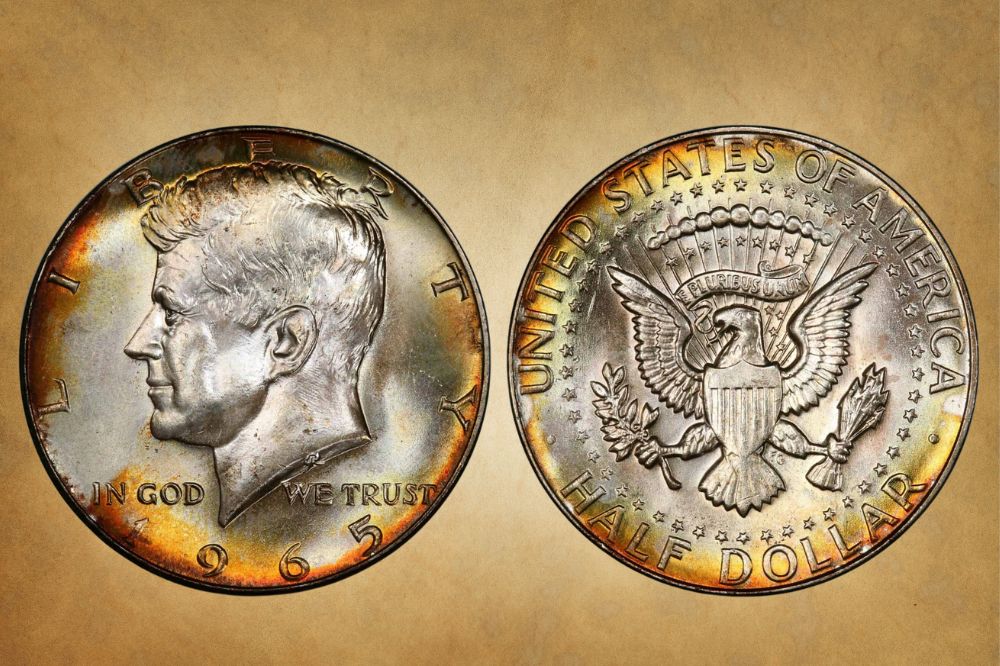
The 1965 Half Dollar is a Kennedy Half Dollar. Unlike the original 1964 Half Dollar, it only had 40% Silver. This was to combat the coin shortage of the 1960s, which pulled millions of coins out of circulation due to the high price of silver. Other 1965 denominations were clad, but JFK stayed silver for commemorative reasons. Let’s confirm the 1965 Half Dollar Value.
1965 Half Dollar Value Chart (Business Strike) |
||||||||
| Mint Mark | G 4 | AU 50 | MS 60 | MS 62 | MS 64 | MS 66 | MS 67 | MS 67+ |
| 1965 No Mint Mark Half Dollar Value | $5 | $5 | $7 | $8 | $26 | $160 | $2,600 | $11,000 |
1965 Special Strike Half Dollar Value Chart |
||||||||
| Mint Mark | SP/SMS 30 | SP/SMS 50 | SP/SMS 60 | SP/SMS 62 | SP/SMS 64 | SP/SMS 66 | SP/SMS 67 | SP/SMS 68 |
| 1965 No Mint Mark Special Strike Half Dollar Value | $3 | $3 | $5 | $7 | $15 | $30 | $70 | $260 |
1965 Half Dollar Value Guide
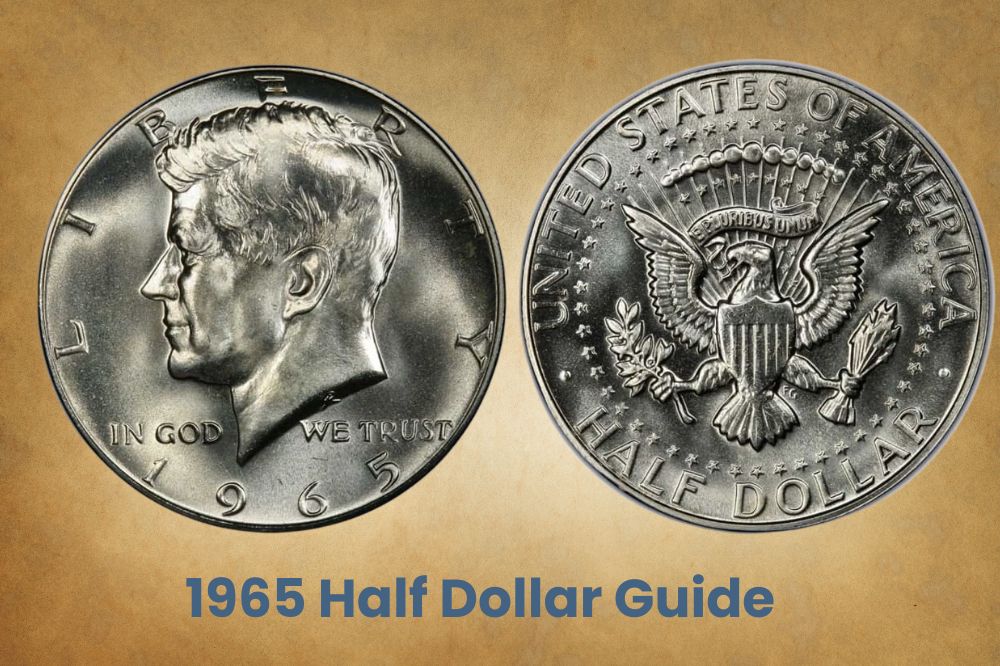
During the 1960s, a boom in electronics and consumer items created a huge demand for silver, which shot up the price of this precious metal. Soon, the melt value of silver coins surpassed their face value. People started to hide these coins, either melting them to resell at market rates or waiting for the price to get higher. They became the common man’s bullion.
Out of habit, people hoarded all coin denominations, even the ones without silver in them. The US Mint figured people were hoarding the coins for their mint marks, so they decided to remove these geolocators from all coins minted between 1965 and 1967. That way, no mint branch would be more valuable than any other. So these coins can’t be evaluated by location.
As a result, it’s hard to tell which 1965 Half Dollar came from which mint, and it can’t be accurately used as a value factor. That leaves condition as the main decider of a coin’s resale value, so send your coins to PCGS (Professional Coin Grading Service), ANACS (American Numismatic Association Certification Service), or NGC (Numismatic Guaranty Company).
1965 Half Dollar Value (Business Strike)
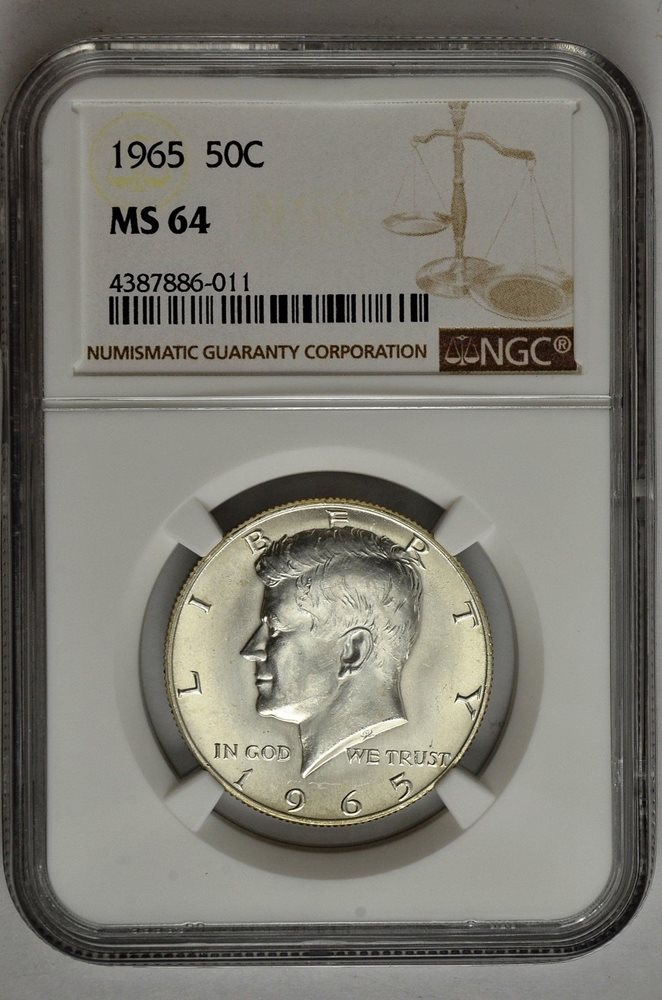
The US Mint made a total of 65,879,366 Half Dollars dated 1965, though most were coined in 1966. In August 2021 and April 2022, an MS 67+ sold for $9,000. PCGS has graded four and estimates their 2023 value at $11,000. It’s the highest grade known, and half a step down at MS 67, the going rate is $2,600. A PCGS-graded MS 67 was $2,100 in August 2022.
Another sold for $1,920 in May 2022, but that was down to $1,320 in July 2022. That same month, an NGC-graded MS 67 was only $840, though it was a bit higher at $1,140 in April 2021. PCGS has graded close to 50 coins at MS 67. A step below that, an MS 66 was just $60 in April 2022. The difference is due to population, with close to 300 coins graded as MS 66.
1965 SMS Half Dollar Value (Special Strike)
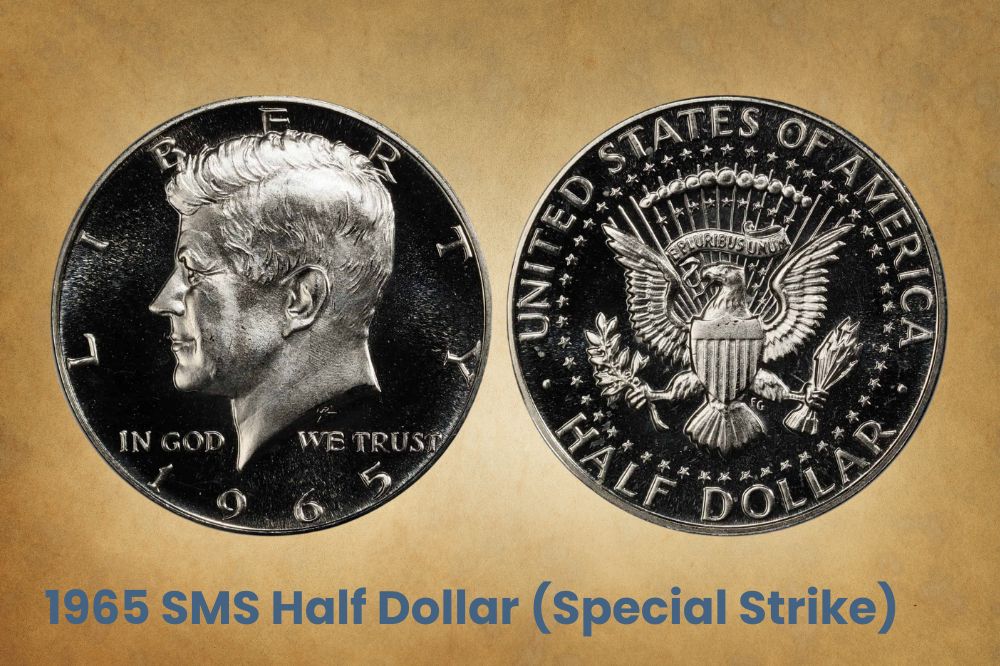
We know of 2,300,000 SMS Half Dollars dated 1965 from all mint branches combined. The mint had refused to make proof coins because Mint Director Eva Adams mistakenly blamed numismatists for the coin shortage. But since there was still a huge demand for collector’s coins and the mint needed the money, the mint made Special Strikes aka Special Mint Sets.
From 1965 to 1967, the sets contained one copy of every circulating coin. They had no mint marks, and while they looked like proofs, their pressing process was different. Unlike proof coins, the planchets weren’t pre-burnished because the mint didn’t have sufficient time. But the dies were scrubbed with horsehair brushes to create those trademark mirrored fields.
And the devices were frosted by pickling them in acid. This acid wash would fade every time the die struck, so the first 50 to 100 coins were graded as Deep Cameo (DCAM) or Ultra Cameo. The next hundred or so were cameo coins, and the rest were just proofs. Also, Special Strike coins are only struck once, but the pressure is higher to ensure accurate design results.
Special Strike Prices for the 1965 Half Dollar
These coins are graded as SP or SMS to differentiate them from other coins like proofs and business strikes since these other coins need at least two strikes each. The highest known grade is MS 68 and it sold for $180 in July 2021. With almost 50 coins graded SP 68 by PCGS, the price estimate in 2023 is $260. The auction record for an SP 67 was $1,208.
This sale occurred about 15 years ago in June 2005. But in September 2022, a coin in that grade sold for $45. It was graded by PCGS, and that usually means better prices than coins graded by NGC. In this case though, an SP 67 by NGC sold for $70 in March 2022. So far, PCGS has graded more than 1,000 coins at SP 67. It also has eight coins graded SP 67+.
Their price estimate is $135. A sample was $100 in June 2020. Meanwhile, an SP 68 CAM sold for $3,565 in April 2008. That was down to $1,850 in July 2017. But an NGC-graded SP 68 was $960 in November 2022 and $840 in January 2023. The PCGS estimate for 2023 is $2,500, with ten known coins. Finally, an SP 67 DCAM was $12,650 in January 2008.
PCGS has only received 14 SP 68 DCAMs, but based on the averages, their price estimate for 2023 is $6,000. In September 2019, one sold for $7,050 while an NGC-graded SP 68 DCAM was $3,720 in November 2017. One step down, PCGS has graded 16 coins at MS 66, valued at $1,350. A PCGS-graded sample was $1,320 in 2018 and an NGC-graded coin was $660 in 2021.
Related Posts: 26 Most Valuable Half Dollar Coins In Circulation
1965 Half Dollar Errors
Mint mistakes can make a coin considerably more valuable. The most common errors include doubling, tripling, off-centers, wrong planchets, and obstruction by foreign objects. These ‘blockers’ could be bits of tape, staples, stray metal, fabric, or even other coins that are stuck in the coin press. Sometimes, a coin falls back into the hopper and gets struck again!
1965 Half Dollar DDR Error
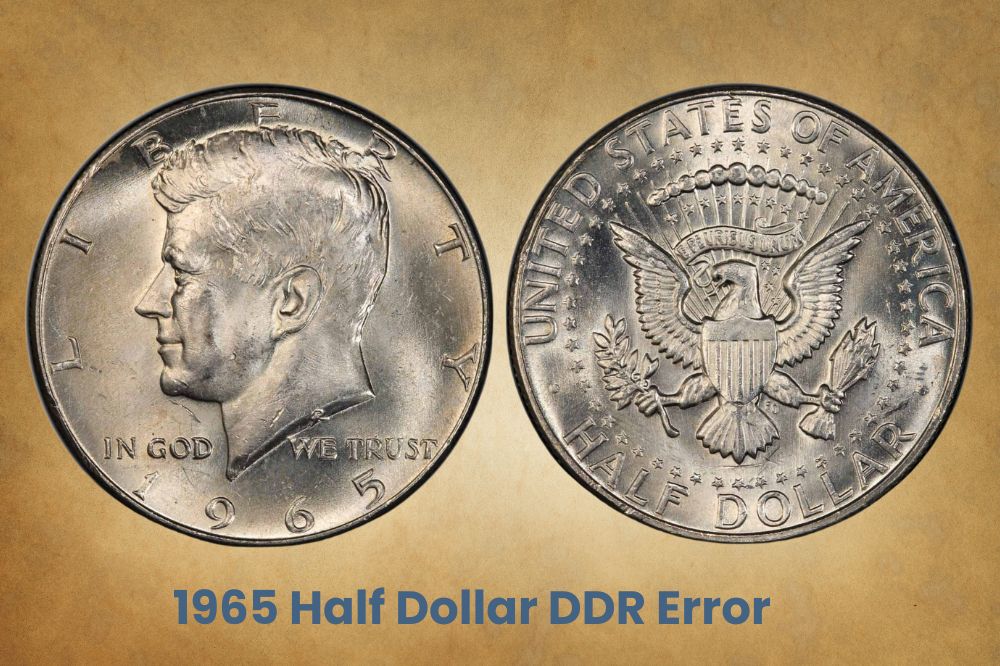
DDR means doubled-die reverse. It happens when the die moves in mid-strike so the second impression from the reverse hub hits a slightly different spot. This flaw then gets reproduced on every coin the die mints, so it becomes a variety. In September 2018, an MS 66 DDR sold for $1,140. PCGS has graded one unsold MS 67 DDR and estimates its 2023 value at $3,500.
1965 Half Dollar Special Strike DDR Error
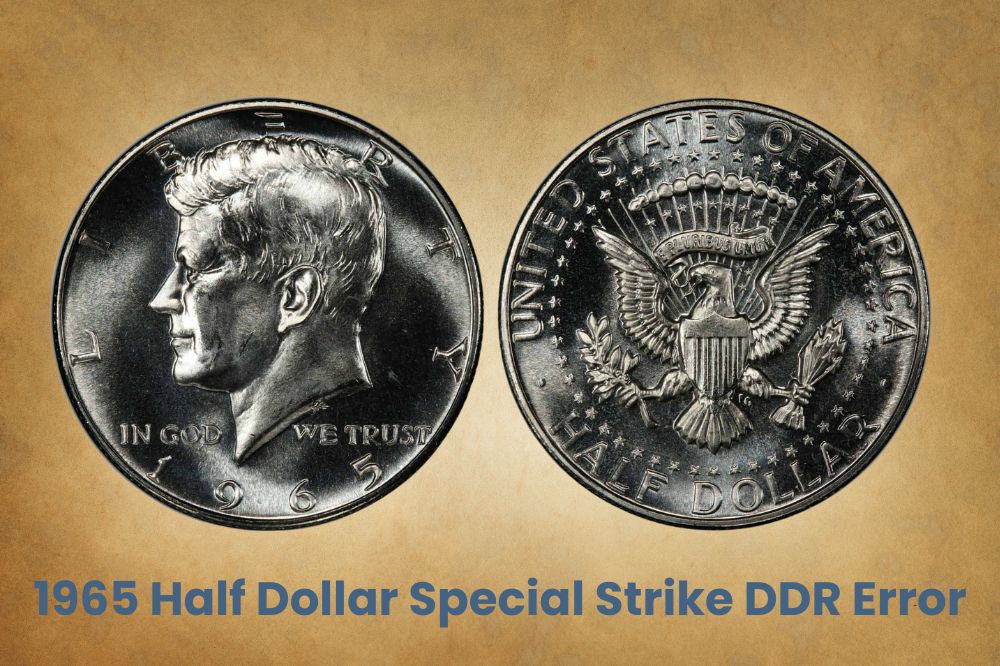
The previous DDR was on business strike or regular strike coins, intended for everyday use. But there’s also a DDR variety among 1965 SMS Half Dollars. In SP 66, one sold for $282 on eBay in January 2019. PCGS estimates SP 66 at $450 and SP 67 at $700 in 2023. An NGC-graded SP 67 was $149 in December 2022, up from $100 in June and $120 in April 2022.
1965 Half Dollar Struck on a Clad Quarter Planchet
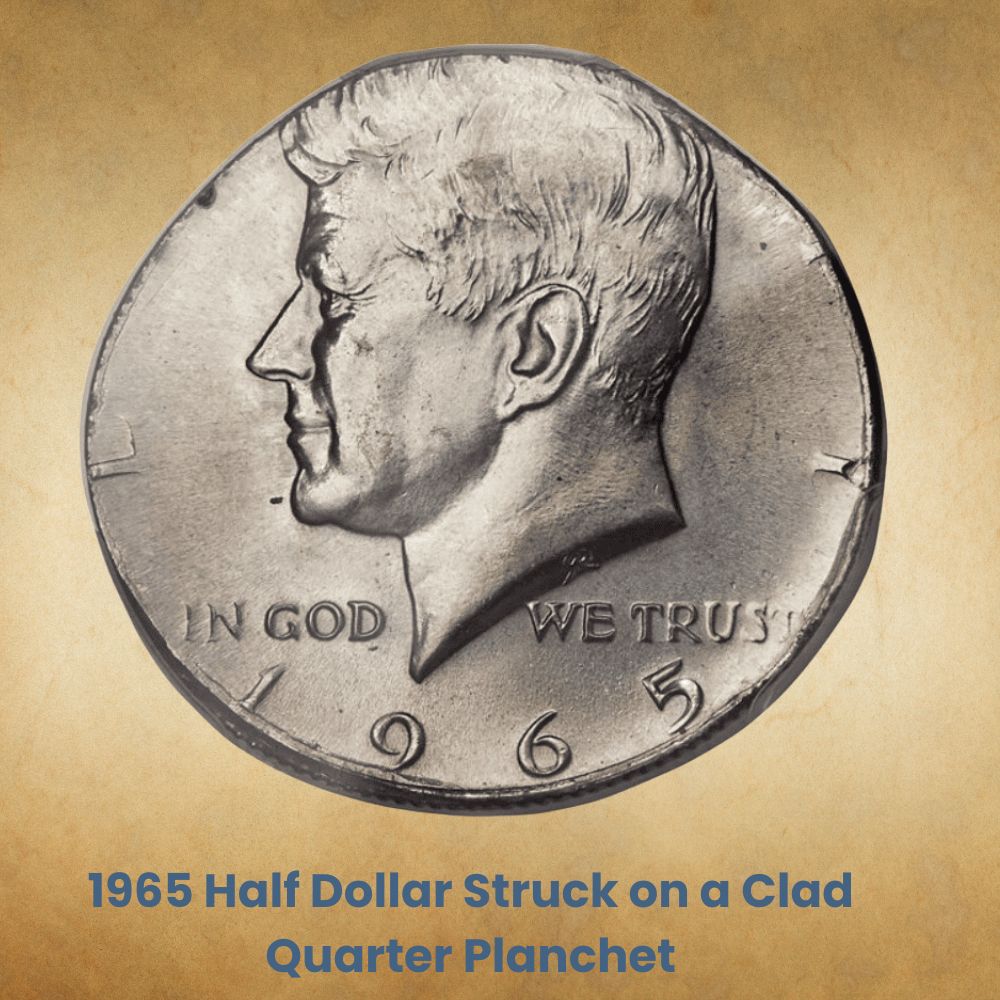
In 1965, all coins except the Kennedy Half Dollar had switched to clad cupronickel planchets, and this 40% Silver Half Dollar was accidentally struck on one of the clad 25c blanks. Since quarters are smaller, part of Liberty got sliced off the front and the whole denomination is missing on the back. Also, the coin would weigh much less. In MS 64, it sold for over $975.
1965 Half Dollar DDO Error
DDO means doubled-die obverse. It’s the same error as a DDR, but this time, the doubling occurs on the obverse die. You may need a jeweler’s loupe or coin microscope to spot it, and the easiest place to check is on the words and numbers, so look closely as Liberty, In God We Trust, and 1965. In MS 64 (graded by ANACS), this mint mistake was sold for about $30.
Related Posts: 17 Most Valuable Kennedy Half Dollar Worth Money
History of the 1965 Half Dollar
The Kennedy Half Dollar was introduced in 1964 to help the nation mourn the loss of John F. Kennedy, the 35th President of the United States. At the time, an intense coin shortage was underway due to a spike in silver prices. So like many coins before it, the 1965 Half Dollar was hoarded, both as a memento and as a source of bullion. Other coins got switched to clad.
But due to its importance and cultural relevance, the Kennedy Half Dollar retained its silver content for another 5 years. But the amount was cut to less than half, from 90% to 40%. Also, the mint mark was removed from all coins because the Mint Director, Eva Adams, believed it was a factor in the shortage. She thought numismatists were shoring up their collections!
Interestingly, this lack of mint marks led to some unusual coins being minted between 1965 and 1967, including proof coins without the S. It’s unclear how these coins were made since no proof coins of any denomination were allowed during that period. The coins didn’t pop up until the 1990s and were traced to her private estate, so they still raise a few eyebrows.
Also, while it’s impossible to identify them, between January 1965 and December 1965, almost 280M Half Dolalars were struck, but they were dated 1964, meaning they were 90% silver. This was done to alleviate the pressure caused by hoarding. But these new coins joined their peers in melting pots, cigar boxes, and sock drawers. Hardly any got into circulation.
This process continued, with Half Dollars Minted from January 1966 to July 31st, 1966 still carrying the 1965 mint date. So essentially, the only 1965-dated coins that were minted in 1965 were the Denver coins made on December 30th and 31st 1965, though they didn’t have the D Mint Marks. The rest were either dated 1964 or minted in 1966. Yes, it’s confusing!
Related Posts: 18 Most Valuable Franklin Half Dollars Worth Money
How to Identify 1965 Half Dollar?
To effectively describe the features of the 1965 Half Dollar (or any coin really), you need some basic terms. The blank disc that forms the coin is called a planchet and its raised border is the rim or collar. The front or heads side is the obverse and the back or tails side is the reverse. The thin sides are edges, and on Half Dollars, they have ridges known as reeds.
The words on a coin are referred to as mottos or legends while the images are called devices and the backdrop of the coin is called its field. Coins from 1965 to 1967 don’t have mint marks – more on that later. But they’ll still have the designer’s initials and the mint date. Now let’s look at the distinguishing physical characteristics of the 1965 Kennedy Half Dollar.
The Obverse of the 1965 Half Dollar
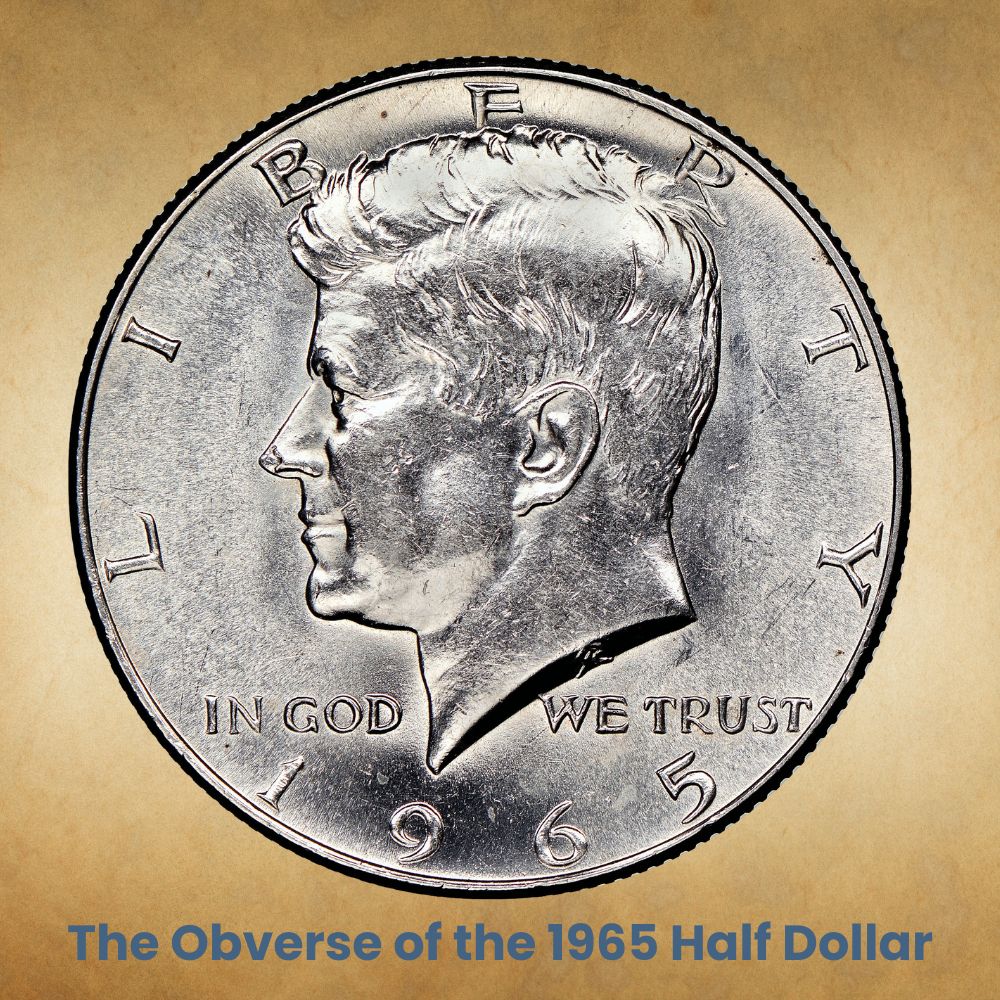
The obverse (heads side) of the 1965 Half Dollar features a profile of JFK facing left. The legend Liberty runs along the upper rim of the coin, from about chin-level to the nape of his neck. The BER is hidden in his hair at the top. The date is at the bottom of the coin, and In God We Trust runs from left to right. GR is engraved where the neckline cuts off the portrait.
The Reverse of the 1965 Half Dollar
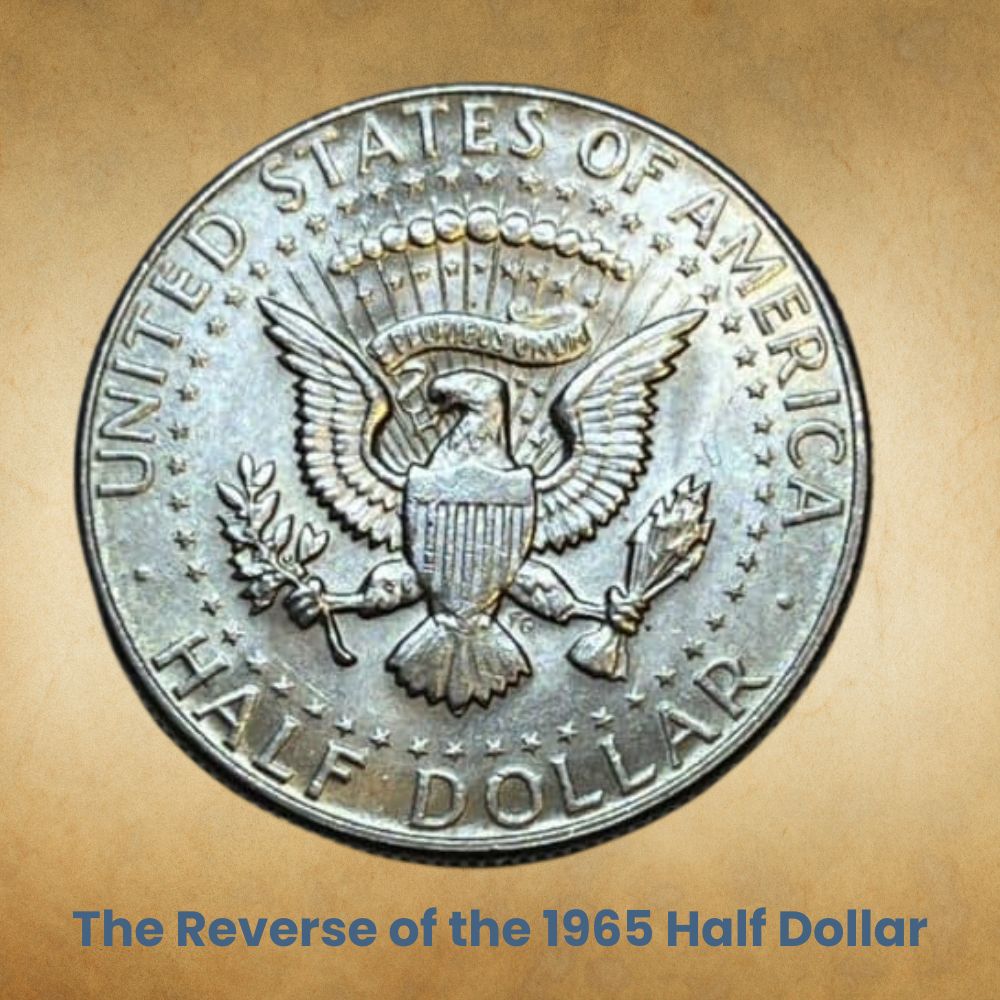
The reverse (tails side) of the 1965 Half Dollar shows the Seal of the US President. In the middle of the seal, the eagle is holding 13 arrows, an olive branch, a shield, and a sash that reads E Pluribus Unum. The coin has a total of 63 stars – 50 around the seal to represent all 50 states, and 13 inside the seal to indicate the 13 states that had joined the Union by 1790.
The eagle has nine stars above its head, over the sash, and five more to the right of its head. Other elements are also grouped in 13 (arrows, clouds, and stripes on the shield). The top of the coin says United States of America and the bottom shows the denomination, Half Dollar. Two dots separate the two legends along the rim. FG sits between the right leg and the tail.
Other Features of the 1965 Half Dollar
The 1965 Half Dollar is 40% Silver and 60% Copper. It had only been around for a year, and the loss of JFK was still fresh, so the mint was unwilling to make it a base metal coin until 1971. It was 30.6mm in diameter (1.2 inches), is 2.15mm thick (0.085 inches), and weighed 11.5g, which was still double the weight of a 1965 cupronickel quarter. Its edge has 150 reeds.
FAQs About the 1965 Half Dollar
Yes, a 1965 Half Dollar is 40% Silver and 60% Copper. To ensure the coin remained as shiny as the 1964 versions, the metals were mixed in three layers. The inner layer was 79% Copper and 21% Silver while the outermost layers were 20% Copper and 80% Silver for a richer hue.
How Can You Tell if a 1965 Half Dollar is Silver?
First, weigh the coin. For reference, 1964 Half Dollars were 90% Silver and weighed 12.5g while 1965 to 1970 Half Dollars were only 40% Silver and weighed 11.5g. The cupronickel-clad Half Dollars that were minted after 1971 weighed 11.34g and you can sometimes see traces of copper showing through at the edge, so that’s a good spot to look for verification.
